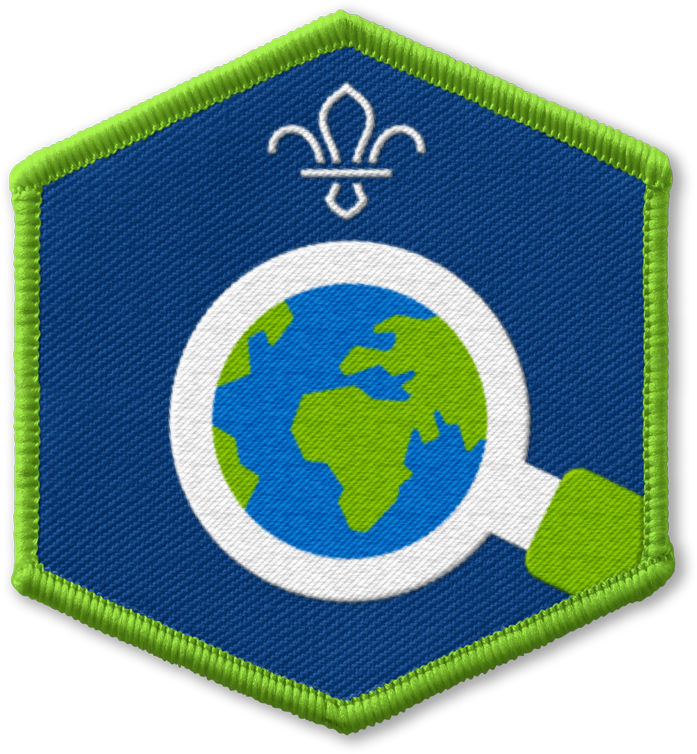
Play Jegichagi
You’ll need
- Rulers
- Pens or pencils
- Scissors
- String
- 3 to 4 coins or counters (for each player)
- A piece of 20cm x 20cm paper or fabric (one per player)
- Something to fasten the coins in place - elastic band or string works well
시작하기 전에 (Before start)
- Use the safety checklist to help you plan and risk assess your activity. Additional help to carry out your risk assessment, including examples can be found here. Don’t forget to make sure all young people and adults involved in the activity know how to take part safely.
- Make sure you’ll have enough adult helpers. You may need some parents and carers to help if you’re short on helpers.
Introduce the activity
- Gather everyone in a circle and tell everyone they’re going to play a game called Jegichagi. Explain the different levels of games.
There are several different variations of this game. These include:
- Ttanggangaji (plain Jegichagi): In this version, the kicking foot must touch the ground after every kick.
- Eogichagi: In this variation, the left and right foot need to be alternated for each kick.
- Heollaengi: In this version, the kicking foot and ‘Jegi’ stay in the air for the entire game.
- Dwitbalchagi: In this variation, only the top of the foot is used to kick.
- Mureupchagi: In this version, the player uses their knee rather than foot to kick.
- Eonjigi: In this variation, the player kicks the ‘Jegi’, then catches it on their head, before dropping it again and kicking.
제기 만들기 (Make Jegi)
- Explain to everyone that they’ll each make a Jegi and then play the game, both as individuals and in teams.
- Make sure everyone has a piece of paper or fabric big enough to make a Jegi. Everyone will need a square piece, approximately 20cm x 20cm, to start with.
- You can use a ruler, pen or pencil, and scissors for everyone to cut out their square. An adult volunteer could also make them before the session to make it quicker.
- Once everyone has their square, they need to place it flat on a surface, such as a table or the floor.
- Everyone should stack 3to 4 coins or counters in the just above the bottom side of their square, making sure the coins or counters are placed in the middle.
- Next, fold over the bottom edge of the square, covering the coins. Then keep folding the paper over lengthways from the bottom to the top, making sure the coins stay stacked in the centre. Everyone should now have a long strip of paper/fabric with the coins stacked securely in the middle.
- Bring the two sides/ends of the paper together, so that the strip’s folded in half with the coins at one end and the two tail ends touching together at the other.
- Secure the coins inside the paper/fabric strip, using an elastic band or some string.
- Cut lengthways along the tails, making multiple snips approx. 1cm apart along the sides, so that you have lots of thin strips.
- You’re now ready to play the game.
게임하자 (Let’s play)
- Everyone should find a space where they can kick freely.
- The winner of the game is the person who kicks their Jegi the most times, without letting it touch the ground. It’s a bit like doing keepie uppies with a football.
- Decide which level of Jegichagi you want to play. In the easiest version, the kicking foot must touch the ground after every kick.
- Everyone starts by holding their Jegi and dropping it towards their foot. They then need to kick the Jegi upwards, let their kicking foot touch the ground, then quickly kick the Jegi again before it reaches the floor to keep it in the air. They should continue to do this as many times as they can.
- Everyone should try and count this for themselves if they can.
- The game ends when the last person kicking their Jegi lets it fall to the ground. Everyone should then share their score, if they want to, to see who kept their Jegi up with the most kicks.
Reflection
This activity is a fun way of being active while also learning about another culture. Did you try any of the different variations? Were any more challenging than others? Think about different games played by different cultures and if there are any other games you can think of that you’d like to share with others? Why not look at activity finder for some more inspiration on different games from around the world?
Safety
All activities must be safely managed. You must complete a thorough risk assessment and take appropriate steps to reduce risk. Use the safety checklist to help you plan and risk assess your activity. Always get approval for the activity, and have suitable supervision and an InTouch process.
- Active games
The game area should be free of hazards. Explain the rules of the game clearly and have a clear way to communicate that the game must stop when needed. Take a look at our guidance on running active games safely.
- Scissors
Supervise young people appropriately when they’re using scissors. Store all sharp objects securely, out of the reach of young people.
There are several different variations of this game. You could make the game harder or easier, depending on which variation you choose to play.
- If someone can’t kick the Jegi, they could throw it instead. People could also choose to play from a seated position, while using the hands to try to hit the Jegi and keep it in the air.
- People could work in pairs, with a young leader or with an adult volunteer to make the Jegi if they may struggle to cut, fold and tie the coins into the paper or fabric.
All Scout activities should be inclusive and accessible.
This game could be played in a tournament in your local area with other sections and groups.
There are lots of traditional games which originate from Korea. Have a look at some others and try them at another meeting.
Young people could choose what they would like to make their Jegi from. They could choose the colours or patterns of the paper/fabric.



